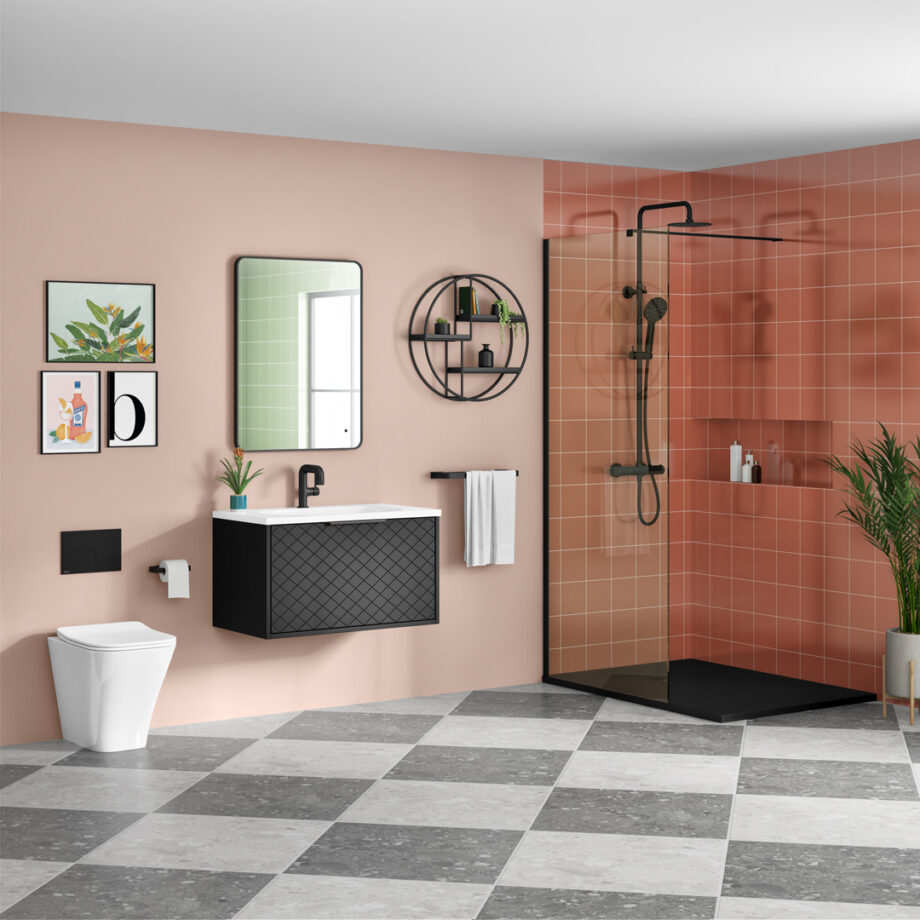Bathroom mould can be an unsightly nightmare and ruin the look of your dream bathroom, but it’s not just about the aesthetics- it can also have a serious impact on your health. That’s why it’s so important to tackle mould as soon as you spot it.
The causes of bathroom mould
Bathroom mould can occur for a variety of different reasons, with the most common being high humidity, but other factors can also be to blame. Poor ventilation is
another major cause of bathroom mould as it prevents any excess moisture from
escaping the room.
Leaks around windows and doors can also result in
condensation occurring and increasing moisture levels, creating an ideal breeding
ground for mould spores to thrive.
Additionally, an accumulation of dust or dirt on surfaces in your bathroom can feed mould growth and cause it to spread quickly.
Removing and preventing bathroom mould:
Removing and preventing bathroom mould can be a tricky task but it is essential for preventing the spread of spores, causing potential health issues and of course for the overall aesthetics of your bathroom.
The first thing to do is identify the cause of the mould. Is it because of poor ventilation or too much moisture in the room? Is there a water leak?
Once the cause is identified, you can put some of our handy mould-busting tips into place:
1.Increase ventilation:
Having good airflow is key for preventing the growth of mould, ensure windows
and fans are open when possible and regularly wipe down surfaces with a damp
cloth to help keep the air in the bathroom nice and fresh.
2. Use natural cleaners:
Using natural cleaners like baking soda and vinegar are an effective
and affordable solution for removing and preventing mould. Mix equal parts of
vinegar and water to create a mild disinfectant, then spray it onto the
affected area and leave it to sit for a few minutes before wiping it away with
a cloth or sponge.
Natural cleaners are non-toxic and can be used safely on most surfaces without fear of harsh chemical reactions. Additionally, they are much less acidic than many
commercial cleaning products, making them ideal for surfaces which may be
damaged by strong chemicals. Furthermore, their high pH levels are effective at
killing off any existing mould spores, while also creating an environment that
is unfriendly to new mould growth.
**note that water only should be used to clean our brassware as using any other chemicals could cause damage to the finish, make sure to clean off water with a microfibre or lint free cloth.
3. Keep surfaces dry:
After showering or bathing make sure to quickly mop up any
excess moisture from the bathroom surfaces. This will help to prevent any mould
from forming and spreading.
4. Use a dehumidifier or a fan:
The humidity levels in your bathroom can be a major contributing factor to the
growth of mould, so invest in a dehumidifier or bathroom fan to help to keep
your bathroom dry and reduce dampness levels.
5. Regular maintenance:
Make sure to clean your bathroom regularly, paying particular attention to
areas where mould is likely to form such as the shower and sink. This will help
keep it at bay for longer.
6. Inspect leaks or draughts:
Inspecting for leaks and draughts in your bathroom is essential for preventing
mould growth. You should regularly check all the plumbing fixtures and ensure there are no drips or slow-moving water that could be feeding mould spores.
Additionally, look for any cracks or gaps between walls, windows, and doors where air can freely pass through, as these will allow moisture to enter your bathroom and
contribute to mould growth. If you find any of these issues, it’s important to
deal with them swiftly to reduce the chance of an infestation occurring.
By following these simple tips, you can keep your bathroom looking aesthetic and prevent any ill health effects caused by mould. A little bit of extra effort can go
a long way to keeping your bathroom mould free.
Summary
Keeping your bathroom free from mould can be a difficult task, but following some key tips can help you to keep it at bay. Make sure that the room is properly ventilated and dry after each shower and inspect for any leaks or draughts around windows and doors. Clean surfaces with a mixture of water, vinegar, and baking soda to kill off existing mould spores. For added protection, apply a sealant to
surfaces regularly to prevent future growth. With regular maintenance, you can
ensure that your bathroom stays mould-free!

